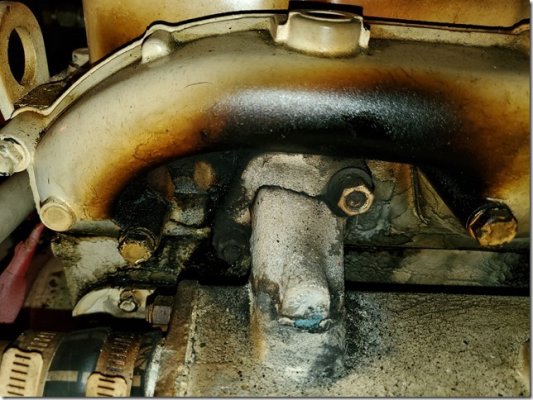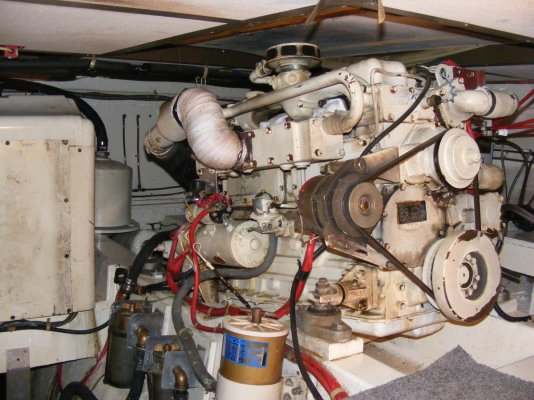Roger Long
Senior Member
We have a cracked manifold on one of our 1975 Perkins 6.354’s and have probably had a small exhaust leak for a long time. We have never smelled it, probably because the air intake is just over a foot away and it simply gets re-circulated. We have smelled exhaust in the cabin only when running directly down wind with the windows open and the wind faster than the boat. It’s very obvious then and we know the smell. We have never smelled exhaust any other time. I go into the engine room right after shut down to turn off some switches and have not noticed anything but the usual diesel smell.
A JB repair lasted 4 days before cracking in the same place. The only immediate fix with replacement parts for these old engines that I have been able to find is a nice upgrade but would come to about 1/4 the current market value of this boat for both engines and also replace the heat exchangers which we recently did. We can neither afford nor justify that investment at our age.
The only welder I have found who is confident he can repair the manifold is in Maine. He did a lot of beautiful work on my sailboat and has fixed many “un-repairable” manifolds and other parts for the Portland fishing fleet. He is certified to weld nuclear power plant piping while underwater so not your usual rod pusher.
The boat is in Savannah and we are back in New York dealing with non boating things for a couple months. Local knowledge doesn’t turn up anyone we would trust to remove the manifold and ship it in our absence. We can only afford to keep this boat if I do most of the work myself anyway.
So: Would it be reasonable to put a couple more CO detectors around the boat, keep an eye on this, and not give up our winter cruising plans? It will be a lot easier to deal with it in the spring when the boat is back north and we can drive the manifold to Maine. These engines run at about a quarter their rated output in cruise and the exhaust is crystal clear. It’s hard to believe they are producing much CO running that lean anyway.
What would you do (on a shoestring)?
A JB repair lasted 4 days before cracking in the same place. The only immediate fix with replacement parts for these old engines that I have been able to find is a nice upgrade but would come to about 1/4 the current market value of this boat for both engines and also replace the heat exchangers which we recently did. We can neither afford nor justify that investment at our age.
The only welder I have found who is confident he can repair the manifold is in Maine. He did a lot of beautiful work on my sailboat and has fixed many “un-repairable” manifolds and other parts for the Portland fishing fleet. He is certified to weld nuclear power plant piping while underwater so not your usual rod pusher.
The boat is in Savannah and we are back in New York dealing with non boating things for a couple months. Local knowledge doesn’t turn up anyone we would trust to remove the manifold and ship it in our absence. We can only afford to keep this boat if I do most of the work myself anyway.
So: Would it be reasonable to put a couple more CO detectors around the boat, keep an eye on this, and not give up our winter cruising plans? It will be a lot easier to deal with it in the spring when the boat is back north and we can drive the manifold to Maine. These engines run at about a quarter their rated output in cruise and the exhaust is crystal clear. It’s hard to believe they are producing much CO running that lean anyway.
What would you do (on a shoestring)?




